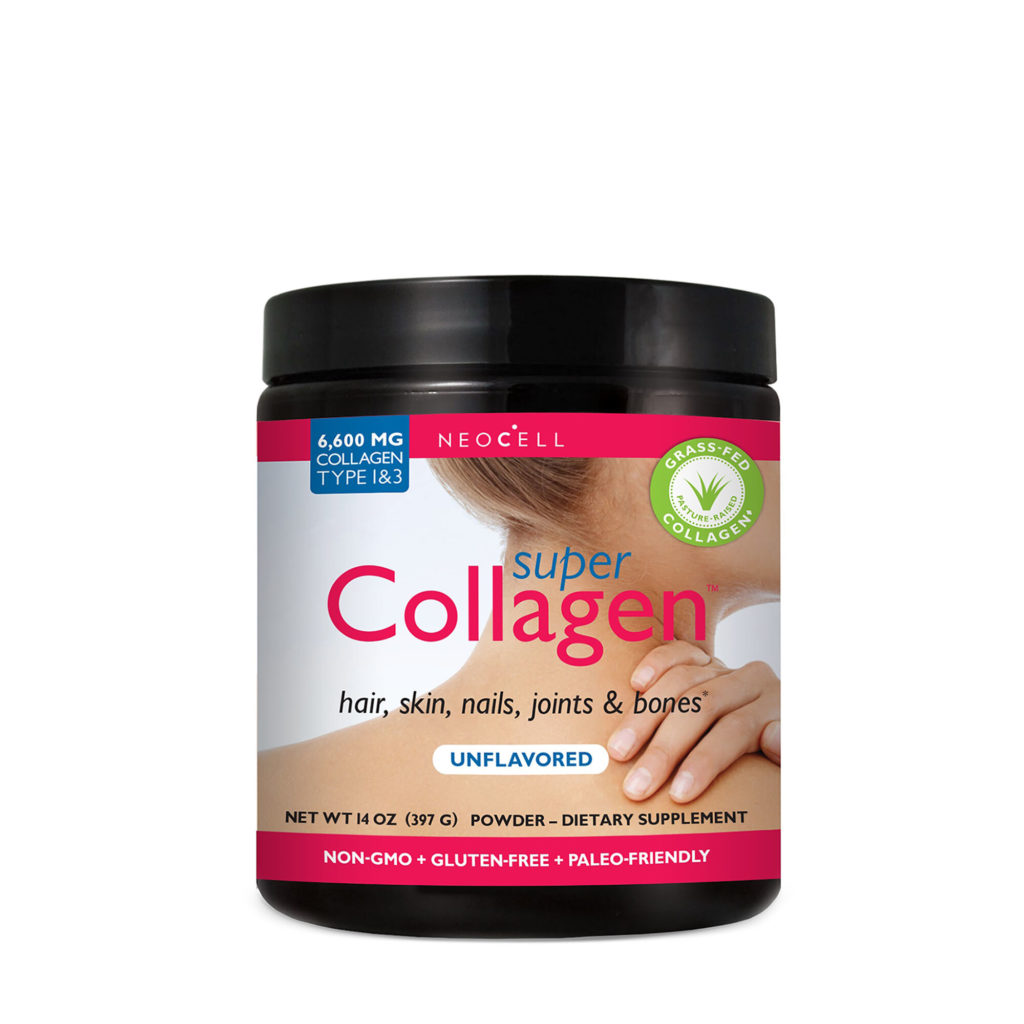COLLAGEN

Structure and Biochemistry
Skin is made mainly of the protein collagen (more than 80% dry weight) along with elastin and glycosaminoglycans. (1) Collagen is a main structural protein found throughout our body and provides strength our tissues and organs. (1)
There are at least 16 types of collagen, but 80 – 90 percent of the collagen in the body consists of types I, II, and III with type I being the most abundant and found in skin, tendon, bone, ligaments, dentin, and interstitial tissues. These collagen molecules pack together to form long thin fibrils. The various collagens and the structures they form all serve to help tissues withstand stretching. (2)
Type I collagen has a fundamental structural unit that is a long (300-nm), thin (1.5-nm-diameter) protein that consists of three coiled subunits: two α1(I) chains and one α2(I). These chains contain precisely 1050 amino acids in a characteristic right-handed triple helix. Many three-stranded type I collagen molecules pack together side-by-side, forming larger fibrils with a diameter of 50 – 200 nm. (2) The unique properties of each type of collagen are due mainly to segments that interrupt the triple helix and that fold into other kinds of three-dimensional structures. (2)
Type I collagen fibrils have enormous tensile strength and can be stretched without being broken. Collagen fibrils (which are roughly 50 nm in diameter and several micrometers long) are packed side-by-side in parallel bundles called collagen fibers. (2) They can withstand enormous forces and amazingly, gram for gram, type I collagen is stronger than steel. (2) Without the structural support of collagen blood vessels, tendons, and skin become fragile. Collagen is mainly found in the dermis (deeper layer) of skin. (3)
Collagen and Aging
With age we subject our skin to greater and greater amounts of sun damage and degrade our skin’s collagen. Sun, smoking, and other environmental exposures cause distinct alteration in collagen and elastic fibers. Matrix metalloproteinases (MMPs) are a group of enzymes in the subfamily proteinases that are responsible for the degradation of collagen in skin. (3) Ultraviolet light (UV rays given off by the sun) affects the post-translational modification of many dermal matrix proteins, including collagen. Sun exposure induces a wide variety of these MMP’s with the ability to break down and degrade matrix protein. Thus, the induction of MMP’s plays major role in the pathogenesis of photoageing. (3) Severe photo aged skin would exhibit fragmented thickened and more soluble collagen fibers. (3) A photoaged dermis exhibits disorganized rope‐like bundles of collagen fibrils and accumulation of abnormal elastin containing material. (3)
The ability of our skin to develop healthy collagen diminishes with age as well, and we are left with collagen that is damaged. (1) Approximately 20% of dermis thickness disappears in older adults, and in addition, lower levels of collagen are synthesized by aged fibroblasts. The ratio of collagen types found in human skin also changes with age. In young skin, collagen I comprises 80% and collagen III comprises about 15% of total skin collagen. In older skin, the ratio of Type III to Type I collagen has been shown to increase due to loss of collagen I. In addition, the overall collagen content per unit area of skin surface is known to decline approximately 1%/year. (3)
In irradiated skin, collagen I levels have been shown to be reduced by 59%; this reduction was found to be linked to the extent of photodamage. (3) Collagen IV and VII play key roles in maintaining mechanical stability and significantly lower levels of collagen IV and VII have been identified at the base of wrinkles in comparison to the flanks of the same wrinkles. (3) The mechanical stability of the skin may be adversely affected by the loss of this collagen, contributing to wrinkle formation. (3)
Anti-Aging
Ageing is believed to be due in part to free radicals; these are often oxygen molecules with an unpaired electron. Free radicals are produced by several factors such as UV exposure, pollutants, stress, smoking and normal metabolic processes. (3) Free radicals are responsible to induce alteration in gene expression pathways, which in turn contribute to the degradation of collagen seen in aging. Antioxidants neutralize these free radicals by supplying another electron delivering an electron pair to an oxygen molecule and stabilizing it in the process. (3) Some of these include vitamin A (retinol), vitamin C (ascorbic acid), vitamin E (tocopherol) and many others found in nature (for example resveratrol, an antioxidant found in high concentration in red grape skin and berries). (3) Topical application of antioxidants like ascorbic acid decrease UVB induced erythema and edema. (3)
There are also numerous “anti-aging” treatments, including chemical skin peels, dermal fillers and plastic surgery. The goal of many skin rejuvenation treatments is to stimulate new collagen development through a process called neocollagenesis. Examples of treatments include lasers (radiofrequency or IPL) and hyaluronic acid injections (dermal fillers) to stimulate its production. (1)
Avoiding the sun and using sunscreen with high SPF (over 15) is the best way to protect skin from UV damage and ensure youthful skin for many years. (1)
References:
- Section 22.3 Collagen: The Fibrous Proteins of the Matrix. Molecular Cell Biology. 4th edition. New York: W. H. Freeman; 2000. http://www.ncbi.nlm.nih.gov/books/NBK21582/
- The Aging Skin. PharmaX. 2007. http://pharmaxchange.info/press/2011/03/the-ageing-skin-part-1-structure-of-skin-and-introduction/


